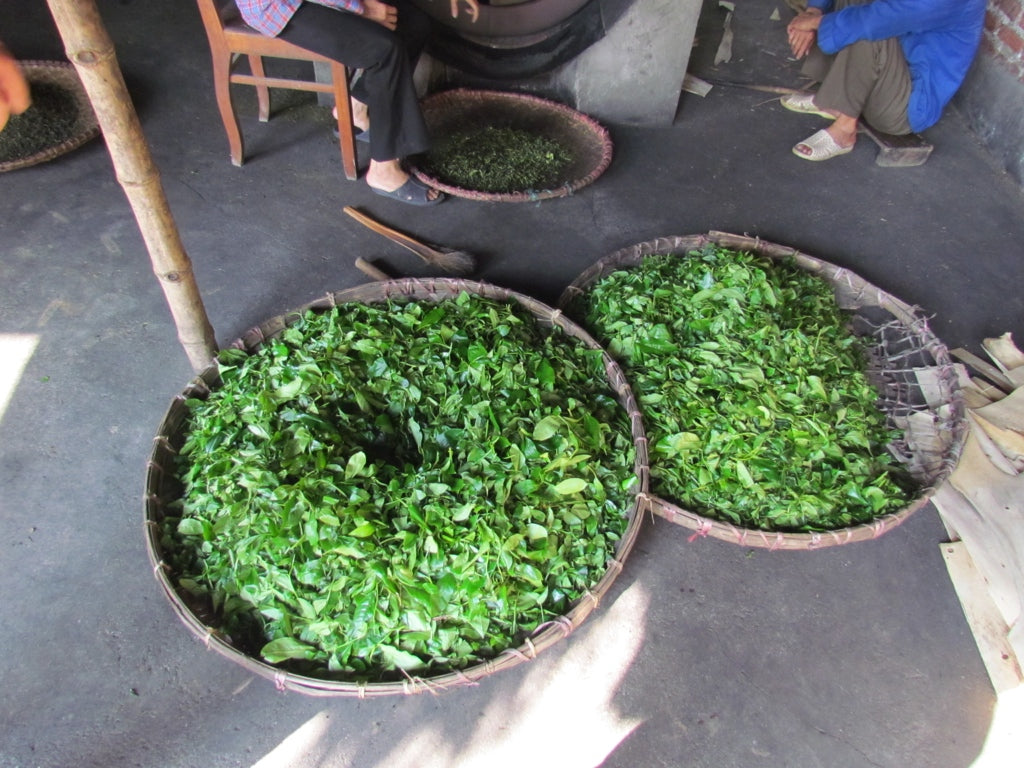News
Myths about tea leaf appearance...and CTC tea
It has been great witnessing the rise of tea - premium tea - in the western world these last 10 years or so. Having started in the tea industry in 1980, I only wish this 'born again' tea thing had happened earlier. But I'm not complaining.
Wonderful to see people trying all types of tea, from every corner of the globe. Even non Camellia Sinensis teas, like Rooibos. In the 1980's my old company, Lipton, was selling a lot of this in South Africa. But none of my non Southern Africa friends had heard of it. Now it seems to be everywhere.
Clearly consumers are getting more adventurous.
But I do get a bit peeved at some of the mis-information that seems to go around. I still hear about teabags being filled with sweepings from the floor. Oh dear. I am certainly not one to defend the large teabag packers - Lipton, Tetley, Twinings et al - but this is a total myth. Sure, they use the fibrous part of the tea plant and dust grades. But sweepings? No !
And I hear about 'broken' tea leaf. And how whole leaf is the one and only high quality tea. This too is myth. Or should I say 'simply wrong'?
Initially a few thousand years ago, tea leaves were dried in the sun...and drunk. Very simple. And whole leaf. Green tea was prepared by hand - as it still is in much of China. It was when black tea was first commercially grown in India by the British in the early mid 1800's that tea manufacturing became 'industrialised'. Black tea lent itself to such a process. Also, black tea is less delicate than green tea, and was better suited to being farmed in Assam in remote north west India, and then being brought down to Calcutta for shipment to the UK many months later.
The British developed a manufacturing process called CTC (crush, tear and curl). This involved a CTC machine - which cuts and crushes the softened green leaf between two rotating toothed steel rollers. A lot of the juices get released. There is a lot of oxidation, and chemical and physical changes within the tea leaf.
It is a complicated chemical process. But the point is this....the resulting teas are strong and have a thick mouth feel. Much more robust than any orthodox manufactured tea.
I like strong - but flavoury, and that is critical - teas. Sometimes I like drinking lots of teas to quench my thirst. And tea is hydrating, has heaps of flavour, and is really healthy. What better way to quench one's thirst? These teas can be a tad bitter for some, but a little milk will offset that taste.
So please, don't believe that only whole leaf teas are premium quality. Think of it more along the lines of wine. White wines, red wines, fortified wines, dessert wines - they are all very different. But they can all be superb in quality. And think of black tea as red wine. There are delicate types, thicker types, and types in between. In Australia we drink a lot of Shiraz grape wines. And the same goes for tea - most Australians, and Brits, prefer thick teas for most of their every day drinking..
So carry on being adventurous. Drink good tea. But try not to be tea snobs. Just appreciate the differences.

